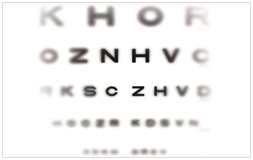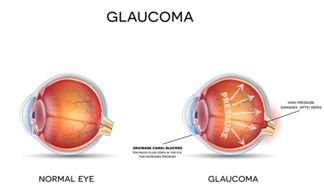Glaucoma Services
 Glaucoma is a chronic, progressive deterioration of the optic nerve (the bundle of nerve fibers at the back of the eye that carry visual messages from the retina to the brain). It is usually caused by or worsened by pressure inside the eye (intraocular pressure, or IOP) that is too high for the continued health of the nerve. The only proven treatment of glaucoma is lowering of IOP in order to prevent or to slow down the damage to the optic nerve. Glaucoma treatment usually begins with medications or laser techniques, but when these have failed or are not tolerated, your ophthalmologist may suggest surgical procedures.
Glaucoma is a chronic, progressive deterioration of the optic nerve (the bundle of nerve fibers at the back of the eye that carry visual messages from the retina to the brain). It is usually caused by or worsened by pressure inside the eye (intraocular pressure, or IOP) that is too high for the continued health of the nerve. The only proven treatment of glaucoma is lowering of IOP in order to prevent or to slow down the damage to the optic nerve. Glaucoma treatment usually begins with medications or laser techniques, but when these have failed or are not tolerated, your ophthalmologist may suggest surgical procedures.
Vision Loss
 In the short term after your operation, glaucoma surgery temporarily disrupts your vision. It is important to understand that permanent vision can be reduced, or even, in very rare instances, totally lost as a result of any of these glaucoma operations; however, vision loss is not a common permanent side effect. Therefore, it is more likely that surgery will benefit your vision in the long run.
In the short term after your operation, glaucoma surgery temporarily disrupts your vision. It is important to understand that permanent vision can be reduced, or even, in very rare instances, totally lost as a result of any of these glaucoma operations; however, vision loss is not a common permanent side effect. Therefore, it is more likely that surgery will benefit your vision in the long run.
- Argon laser trabeculoplasty (ALT):This opens clogs in your eye so fluid can drain out. Your doctor may treat half of the clogs first, see how well it works, then treat the other half later. ALT works in about 75% of people with the most common kind of glaucoma.
 Selective laser trabeculoplasty (SLT):If ALT doesn’t work so well, your doctor may try this. Your doctor beams a highly targeted low-level laser at just the spots where there’s pressure. You can do SLT a little at a time.
Selective laser trabeculoplasty (SLT):If ALT doesn’t work so well, your doctor may try this. Your doctor beams a highly targeted low-level laser at just the spots where there’s pressure. You can do SLT a little at a time.- Laser peripheral iridotomy (LPI):If the space between your eye’s iris (the colored part) and cornea (the clear outer layer) is too small, you can get narrow-angle glaucoma. Fluid and pressure build up in this area. LPI uses a laser beam to create a tiny hole in the iris. The extra fluid can drain and relieve pressure.
- Cyclophotocoagulation: If other laser treatments or surgery doesn't ease fluid buildup and pressure, your doctor can try this. He’ll beam a laser into a structure inside your eye to ease pressure. You may need to repeat it over time to keep your glaucoma in check.








